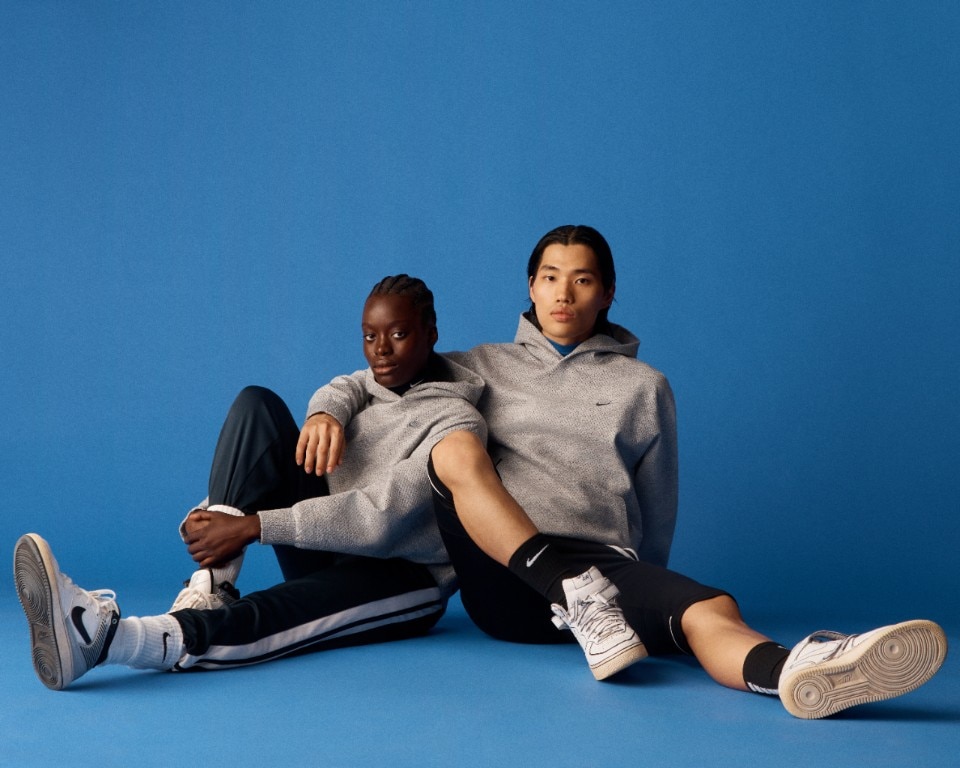In September Nike unveiled Forward and the dogmas of design applied to the textile industry were suddenly subverted. One of the reasons laid in how Forward was presented, not as a fabric alone but as a platform. A whole philosophy for the future of sportswear and fashion design, one could argue.
Two cornerstones of Forward particularly captured our attention: the drastic reduction of carbon footprint and the innovative production process, obtained by “hacking the machine”.
An achievement that took long in the making. Five years of study, development, trying, failing and eventually succeeding backed by insight and scientific research at the Nike Sports Research Lab at the Nike World Headquarters, moved by one ultimate goal: improving the training conditions of the athletes. Or, as Nike likes to call them, athlete*, with the asterisk transversally embracing all sportswomen and sportsmen, from enthusiastic amateurs to gold medallists.
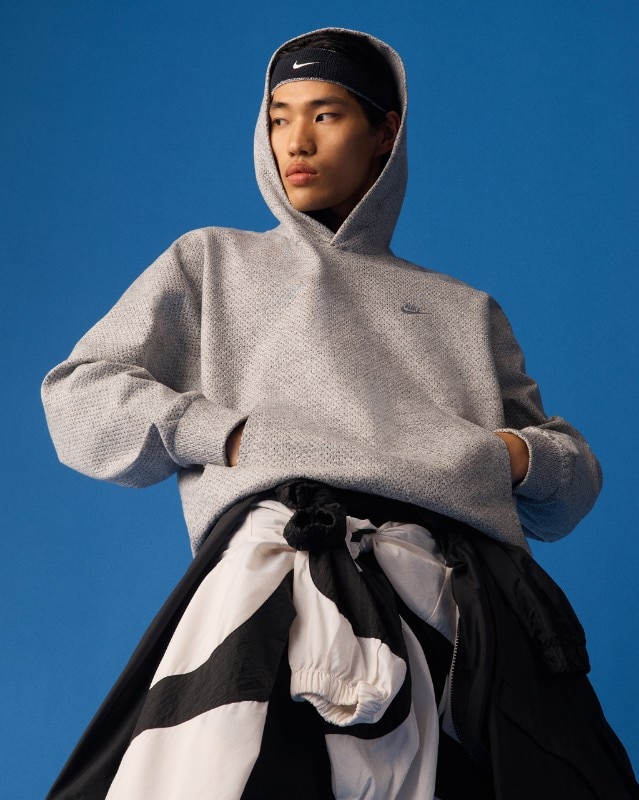
“Always listen to the voice of the athlete”, used to say Bill Bowerman, co-founder of the company. Fifty years on and this mantra is still the driving force behind Nike’s culture of innovation.
“Athletes have been telling us that climate change is impacting them and their ability to perform at their best. As a partner in their pursuit of greatness, we see it as our responsibility to help create products and platforms that serve their needs and limit distractions,” explain Nike.
Design at the service of innovation
This approach is a light guiding the future of the brand, which also hopes to alert and stimulate changes in the whole industry through innovative design.
In line with the brand’s history of sustainability, according to the Swoosh, the design choices unlock a new sophisticated ethos that honours the raw aesthetic of recycled materials and the restraint of additive elements which makes garments easier to take apart and recycle at the end of its useful life.
It is for this reason that Nike Forward garments also represent a revolution design-wise, being conceived with the lowest number of aiglets, zips and sewings to aid their upcycling.
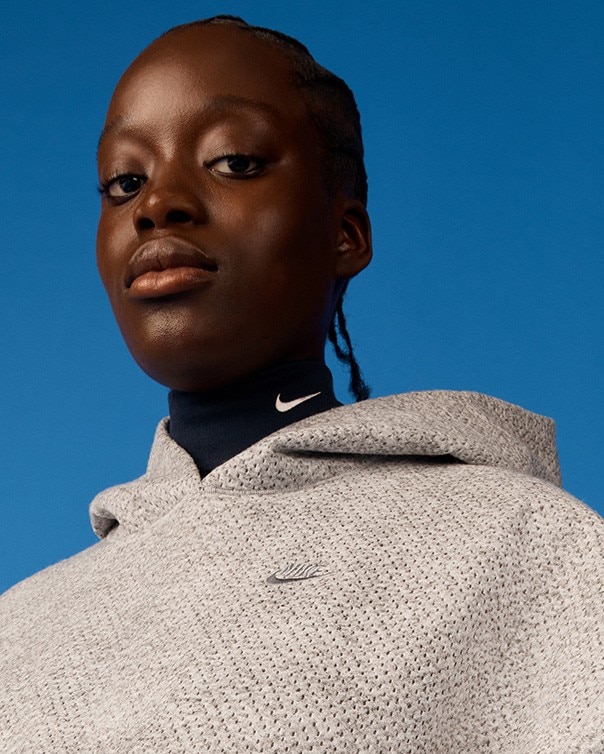
Moving to Zero
Design is also cardinal to Nike’s Move to Zero initiative, a journey to a zero carbon and waste to help protect the future of sport.
“Given our size and scale, we have a responsibility to do what we can to tackle climate change. To accelerate impact, we are implementing renewable energy and energy efficiency programs throughout the value chain and using our size and influence to identify and break barriers, lead the industry and inspire cultural, behavioural change. We see circularity as a creative accelerant, not a compromise,” explains Nike.
Nike Forward therefore seems to be embracing an ethical mission. The new platform is in fact seen by Nike as an opportunity “to reset the way we all think about material and apparel.”
After all, if challenge is part of an athlete’s everyday life, what bigger challenge than climate change these days?!
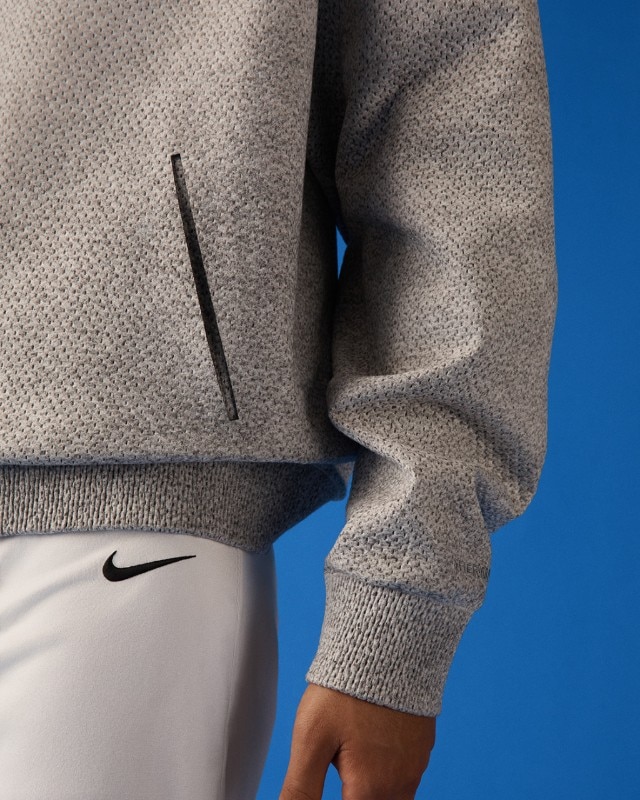
Launched on the iconic Nike grey hoodie and crewneck sweater, and expanded with the introduction of a jacket and pants, the Forward platform prides itself to offer garments with an average 75% reduction of carbon footprint compared to the brand’s traditional fleece. An achievement that Nike define as “a huge win”.
Among the set targets is also that of reducing absolute scope 1 and 2 greenhouse gas emissions (GHG) 65% by 2030 from a 2015 base year, as well as reducing absolute scope 3 GHG emissions 30% within the same timeframe.
Hacking the machine
What’s even more fascinating is the tight bond between design and science pursued by the Beaverton company. Something that may not be obvious to the customer, but that shows how much something often seen as an aesthetic commodity like sportswear is rooted in scientific research and development.
Fundamental to achieve said goals is the manufacturing process mastered by Nike, which was once again guided by an eco-friendly mindset.
“Essentially, we rewired the technology by experimenting with needles; the type, the spacing, the speed and how it performs in relation to the fibers that we used to construct the material.” This operation resulted in cutting down the amount of energy used to make an end product by skipping several stages including spinning the yarn, cutting and sewing the fabric. The fibre is therefore turned straight into fabric through a process of needle-punching, previously never applied to sportswear.
This represented another proof – if needed – of Nike’s attitude, whether in the lab or on the track, of going beyond its comfort zone. This meant borrowing the needle punching technology from non-apparel related industries and hacking it to serve the purpose of Nike.
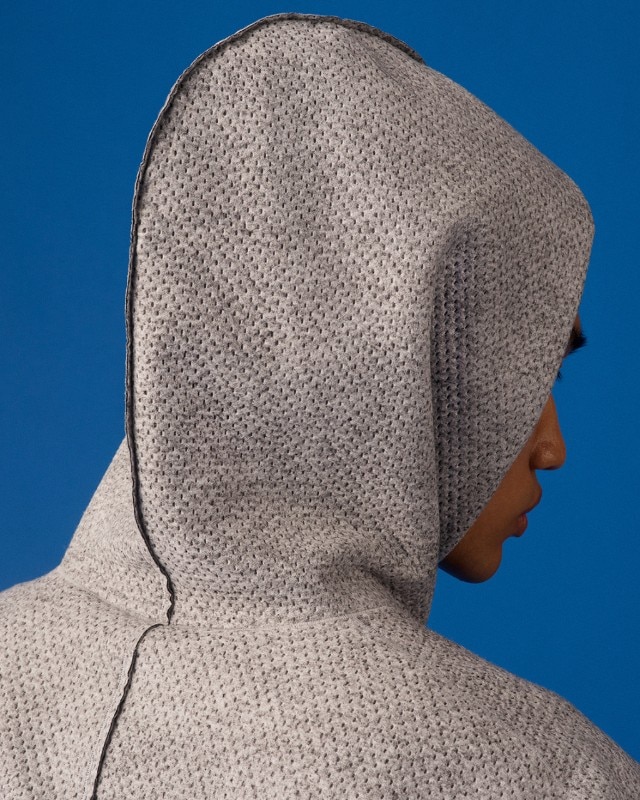
“This method of making overlaps thin layers and mechanically entangles them to create an end textile. We’re starting with a composite of thin layers, but there’s limitless potential to change the makeup. The input is also very flexible and can include industrial waste, pre-consumer waste, and post-consumer waste.
“That was really where that art and science and a little bit of the magic of Nike came together to make the first generation of Nike Forward possible today,” explains Nike enthusiastically.
Forging a new industry standard
Such endless possibilities are mirrored in the ethos of Forward itself. The fact that the platform has been presented and applied to certain garments doesn’t mean that its development and further improvement is over yet.
“We certainly view Forward as an innovation platform with endless possibilities: today it’s a hoodie, tomorrow it could be anything. The method of make allows it to be precisely tuned for athlete* needs. It can be adapted for different lifestyle and performance purposes.”
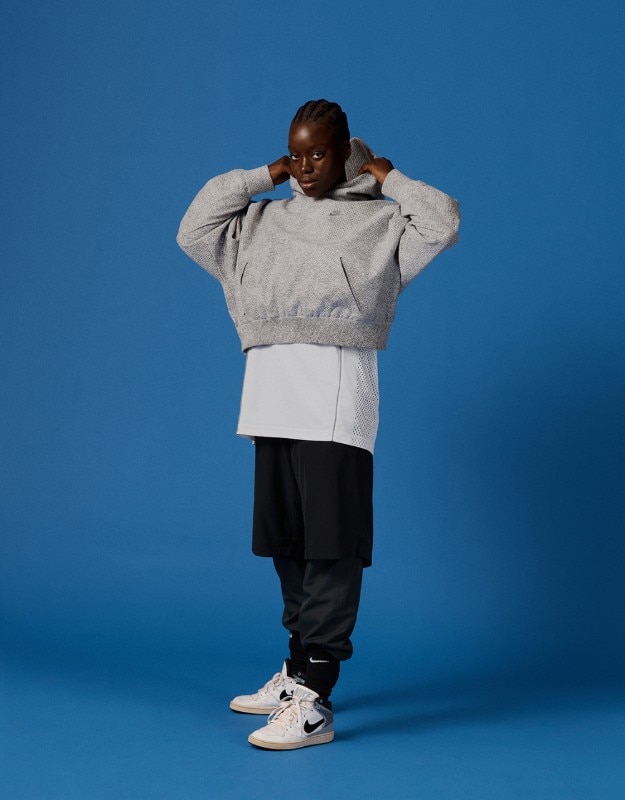
Nike are sure that Forward can do for apparel what Flyknit did for footwear. What started as a revolution soon became an industry-standard, expanding well beyond sportswear and turning into fashion’s new status quo.
“We’ll keep listening to the voice of the athlete,” they assure from the Swoosh headquarters, where Flyknit is seen as a roadmap for Nike Forward and its innovation trail. The future looks bright over Beaverton.


